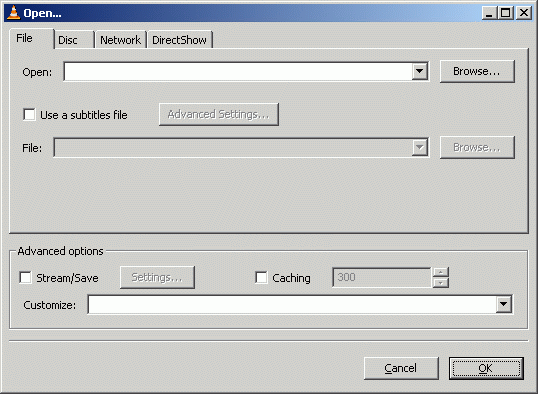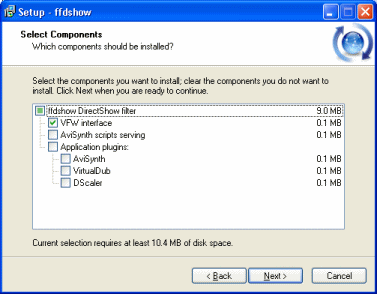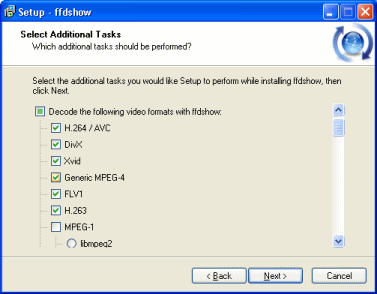How to play MP4 files
MP4 files (MPEG-4 Part 14) are multimedia files. MP4 is a container format that can store video, audio and subtitle data (as well as more depending on content). Since stores like iTunes uses this container format, and it is used with iPod and PlayStation Portable (PSP), MP4 files have become more common. This guide aims to show you how to play MP4 files on your computer on several different players using a variety of methods. To understand MP4 and other video file formats, please read and follow the entire article.
| Follow the Guide Author on Twitter: jamesdela@twitter |
What are MP4 files?
As mentioned in the introduction, MP4 is a container format and can store video, audio and other information. Although audio-only MP4 files usually have the extension .M4A, there is no real difference so MP4 files do not always contain video streams. In order to playback MP4 files you need three different things, a splitter (used with playback software to access the actual video and audio data), decoders/codecs/filters and playback software.
For example, Windows operating systems come loaded with Windows Media Player, but it would need some way to "split" the file to access audio and video data (and control extras like subtitles) and then it would need to decode the video and audio streams. It cannot really do this on its own fresh out of the box, so some tweaking has to be done to play back MP4 in Windows Media Player.
Some playback software comes with built-in support to open MP4 files, but that does not guarantee that the video and audio data can be played without additional software. MP4 files, more often than not, contain either MPEG-4 ASP or AVC (H.264) video with AAC audio. Of course, almost anything can be packed into the MP4 container just like AVI, but AVI would still be the mast used container for video like DivX and XviD. Nevertheless, this guide aims to cover all angles one way or another.
What will we try?
In this guide, we will look at a one-off solution called VideoLAN Client (VLC), installing Haali Media Splitter to add MP4 support for some players (like WMP), installing codecs and filters for most common forms of video around and we will talk about certain players like Media Player Classic. However, before we begin, I would just like to remind you that Apple's iTunes software does support playing MP4 files (might have problems with certain types of video though) but will not be included in this guide.
The Easiest Method
 Download and install the VLC player. The VLC package already includes software to play MP4 files and supports decoding a lot of video and audio formats out of the box..
Download and install the VLC player. The VLC package already includes software to play MP4 files and supports decoding a lot of video and audio formats out of the box..
You can get VLC for Windows from this URL.
 Click File and click the Open File option.
Click File and click the Open File option.Now, click the Browse button next to the first white line at the top of the window with title "Open.." and navigate through your hard drive for the video you wish to watch and select it. After you have selected the video, click OK and VLC will start playing the video you chose.
For other Operating Systems...
Mac: http://www.afterdawn.com/software/alternative_platforms/mac_software/vlc_for_mac.cfm
Linux: http://www.afterdawn.com/software/video_software/video_players/vlc_linux.cfm
Recommended Solution
This is a bit more of a manual method but is beneficial to know about and will add support for MP4 files to Windows Media Player and other software. Firstly, you need to install the Haali Media Splitter, this is additional software that will automatically run when Windows Media Player or likewise encounters an MP4 file.
Install Haali Media Splitter
Step 1. Download Haali Media Splitter by clicking here.
 Step 2. Run the Haali Media Splitter installer. The first thing you will need to do is accept the license agreement of the software. Click I Agree, and you will be asked to select a destination folder. The default is fine so click Next and you will be asked to specify a Start Menu folder, again, the default is fine so click Next. Now you have come to the options (as the picture shows).
Step 2. Run the Haali Media Splitter installer. The first thing you will need to do is accept the license agreement of the software. Click I Agree, and you will be asked to select a destination folder. The default is fine so click Next and you will be asked to specify a Start Menu folder, again, the default is fine so click Next. Now you have come to the options (as the picture shows).
Make sure that the Enable MP4 support option is selected and click Install. It should only take a few seconds before it is complete. Now, Windows Media Player has the ability to open MP4 files, now we need to provide support for the video and audio information in the files to ensure playback.
Install and configure FFDShow
Step 1. The obvious and vital first step is to download FFDShow by clicking here.
 Step 2. Now you have to install FFDShow on your Windows operating system (the OS used in this example is XP Pro). Run the installer. Select your language and click Next. Now you must accept the license agreement of FFDShow; select "I accept the agreement" and click Next. Now you can choose an install directory (default is fine) and click Next again. You are now on the Select Components screen; "VfW Interface" should be selected by default, but if it is not, then please select it as shown.
Step 2. Now you have to install FFDShow on your Windows operating system (the OS used in this example is XP Pro). Run the installer. Select your language and click Next. Now you must accept the license agreement of FFDShow; select "I accept the agreement" and click Next. Now you can choose an install directory (default is fine) and click Next again. You are now on the Select Components screen; "VfW Interface" should be selected by default, but if it is not, then please select it as shown.
Click Next and select a start menu folder (default is perfectly fine again), Click Next again and now you reach the "Select Additional Tasks" screen.
 It is important now that you ensure that under "Decode the following video formats with ffdshow", H.264 / AVC, DivX, and XviD options are selected. Scroll down further until you reach "Decode the following audio formats with ffdshow" and just ensure that AAC is selected (these settings are usually default) and also selecting MP3 won't do any harm. When you click Next, you will come to a "Management of compatibility issues" screen.
It is important now that you ensure that under "Decode the following video formats with ffdshow", H.264 / AVC, DivX, and XviD options are selected. Scroll down further until you reach "Decode the following audio formats with ffdshow" and just ensure that AAC is selected (these settings are usually default) and also selecting MP3 won't do any harm. When you click Next, you will come to a "Management of compatibility issues" screen.
It is recommended to leave the option to use FFDShow for video only with the programs listed beneath to prevent any compatibility problems with other software. Media Player Classic and Windows Media Player will be in here. Click Next and you will get the same screen again, this time for audio. Click Next and select your speaker setup (if you only have 2 speakers, its stereo). Click Next again and then "Install".
 When the installation is finished, your playback software will now be able to decode video and audio stored within MP4 files. Try playing them now in Windows Media Player or Media Player Classic. If you suspect your file should have subtitles, then play it with Windows Media Player and keep an eye on the small application icons to the right of your taskbar. When the file begins to play with WMP, you will see the Haali Media Splitter icon show up. Right click it to see if any subtitles are available.
When the installation is finished, your playback software will now be able to decode video and audio stored within MP4 files. Try playing them now in Windows Media Player or Media Player Classic. If you suspect your file should have subtitles, then play it with Windows Media Player and keep an eye on the small application icons to the right of your taskbar. When the file begins to play with WMP, you will see the Haali Media Splitter icon show up. Right click it to see if any subtitles are available.
To play with Windows Media Player, right click the MP4 file and go to "Open With" and then the "Choose Program" option. From the list, select Windows Media Player.
| Return to mkvtoolnix guide |
Return to Cuttermaran configuration guide |
Another option
After you have installed the Haali Media Splitter you can hunt down individual decoders and install them if you want. Some users promote the use of codec packs. Codec packs are big collections of video codecs. At first sight they can appear very useful, as they will install enough codecs to decode just about any video files you can get online. However, they have also been known to cause problems with playback too.
Still though, if you prefer to install a codec pack instead of using FFDShow, then here are some of your options.
K-Lite Codec Pack [full]
XP Codec Pack
Cole2k Media Codec Pack Advanced
X Codec Pack
Troubleshooting and useful links
If you want to dive into the world of digital video, but want to first learn even the most common lingo, here are some good links for you:
· Glossary definition for MP4
· What is a codec?
· What does "encoding" mean?
· AfterDawn.com: Video term glossary
· AfterDawn Forums: Playback problems
Additionally, if you prefer to use a solution where you use a separate video player software and a separate set of codecs, you might want to try out different video players as well. We have a good selection of freeware players available on our site, but here are some of our favorite ones:
Media Player Classic
Zoom Player
It should be noted that sometimes, despite all the efforts, analysis and trial&error you've applied in order to get a video to play, it just wont. Quite often in those cases, even when none of the file analytics programs (such as AVIcodec or VideoInspector) seem to help, you can come to a conclusion that the file is corrupted. If that is the case, you're pretty much out of luck and might want to try to re-download the file in order to see whether the problem was with the download process itself.
Version History
v1.0 - 23rd of March, 2007 by Dela
v1.0.1 - Return link for mkvmerge guide added 22nd of February, 2008 by Rich Fiscus
Written by: James Delahunty

